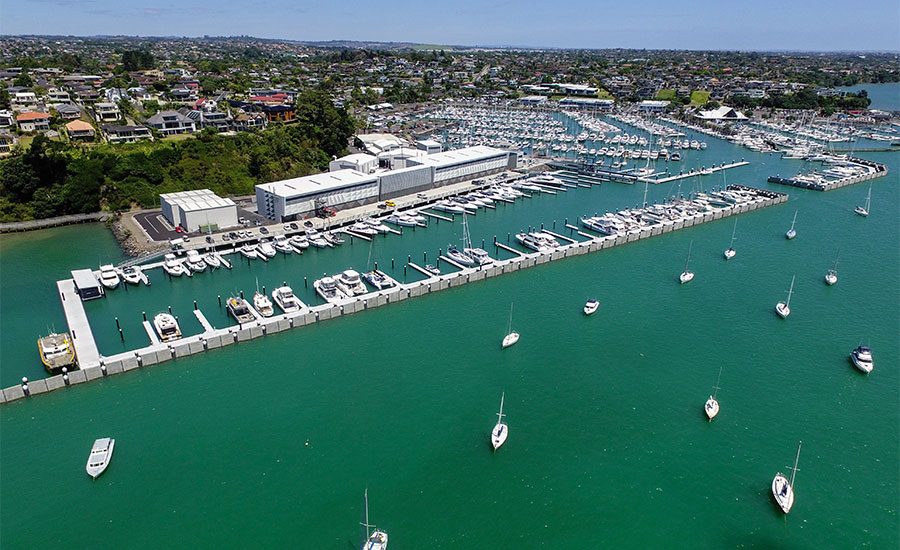

AUCKLAND’S HALF MOON BAY MARINA IS CELEBRATING ITS 50TH MARKED BY THE COMPLETION OF A TWO-YEAR EXPANSION PROJECT THAT’S ADDED 94 LARGE BERTHS AND AN UPGRADED, STATE-OF-THE-ART BOAT YARD TO THE FACILITY.
Adjoining the existing marina, the new North Pier marina’s 94 berths range from 14m to 30m. All were sold before construction began. In total the marina now boasts 580 berths – and it’s protected by a new breakwater.
Though it occupies the same footprint as before, the new boat yard has been reconfigured and is a vastly different facility. It’s now serviced by an additional, 85-tonne travel lift and offers an undercover work area for up to 24 vessels, in effect establishing the yard as a year-round operation.
The expansion, says marina general manager Mark Hollier, has been in years in the planning. “Large berths are particularly difficult to secure in Auckland. We had the space to add more berths. We were also aware that many of our ‘assets’ were getting a little long-in-the-tooth and needed upgrading.
“It made sense to tackle it all at the same time though we knew keeping the facility operational during construction wouldn’t be easy. Covid and lockdowns didn’t help – but I’m pleased to say we’ve come out the other end in great shape.”

BREAKWATER
The project began with the construction of a new breakwater, followed by the removal of its old wooden-pile panel predecessor.
The only one of its kind in the country, the new structure uses independent concrete panels hanging from a steel framework. Designed by Auckland’s McMillan Jacobs Associates (a multi-disciplinary engineering consultancy) it’s not only a very effective wave attenuation structure but also allows the tides to ‘flush’ the entire marina much more naturally and efficiently.
“Having had the luxury of operating here for 50 years,” says Hollier, “we developed a good understanding of the weather patterns and tidal movements and were able to shape the breakwater very precisely to cater to the prevailing conditions. It offers maximum protection with excellent environmental characteristics – a vast improvement on the old breakwater.”
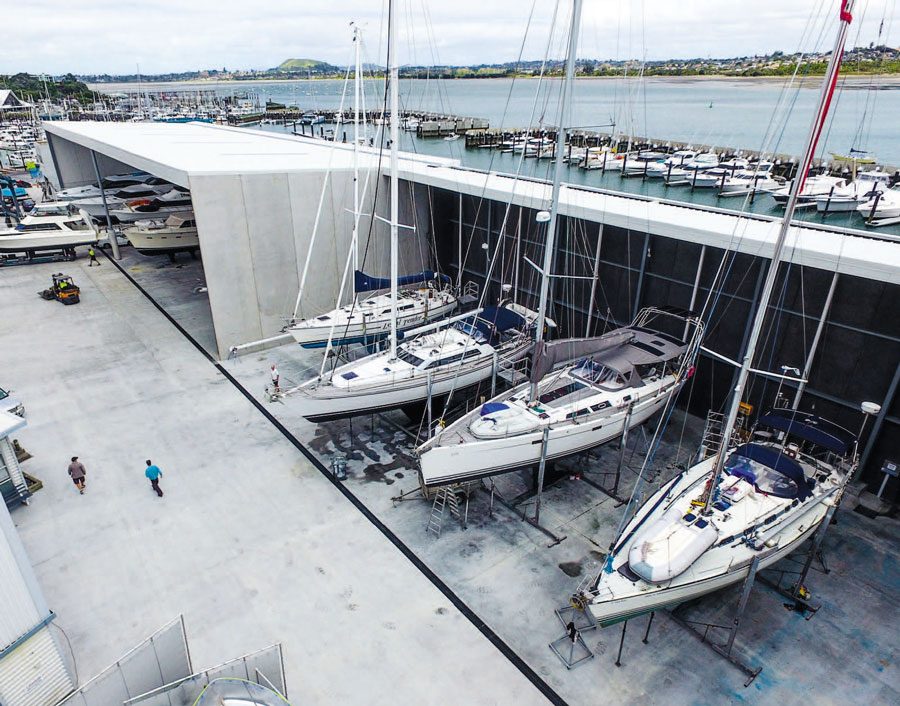
BOAT YARD
Given the larger size of the new marina’s berths, he adds, “we knew it would make sense to offer a full-service facility for bigger vessels – not only lifting them from the water and parking them on the hardstand for maintenance, but also, through covered work areas, to be able to offer all-year maintenance.”
The first part of that proposition was the addition of a new 85-tonne travel lift, operating in tandem with the existing 35-tonne machine. “Again, we had to think a little creatively to work within the constraints of the available land,” he says, “and it ultimately resulted in the building of two ‘runways’ around a single lifting bay. The wider runways (for the bigger machine and bigger/beamier vessels) extend out further.”
Having two machines gives the marina far greater flexibility around scheduling boat maintenance projects. “It means a faster turnaround and we’re now able to react very quickly to unscheduled jobs. This agility will be particularly appealing to boat owners who want to haul their boats for only a few hours – for a survey, for example, or to change a prop.”
But perhaps the greatest attraction for visitors interested in using the new boat yard is its covered work area. Previously, boats were parked along the edge of the open hardstand, in the teeth of the prevailing southwesterly weather patterns. The reconfigured yard now has a covered work area for 18 vessels, as well as six semicovered areas catering for yachts with standing rigging.

There were multiple drivers for the redesigned boat yard, says Hollier. “Firstly, New Zealand’s traditional DIY culture has changed. Boats are bigger and fitted with more complex technology, and the average boat owner doesn’t have the same ‘fix-it’ skills entrenched in his/her grandfather’s DNA. In addition, people are increasingly time-poor and no-one really wants to spend a weekend stripping old anti-foul from a boat’s hull. Our facility – with specialist services – caters for that shift.
“Secondly, the reconfiguration is based on a ‘high-throughput’ objective – one that sees boats serviced quickly and efficiently, where the yard can be operational all year round. Traditionally, around 60% of our business occurred over three months – September, October and November. After that it went quiet.
“With the facility’s covered work spaces we’re confident we can spread the load across the entire year. It gives boat owners much more flexibility when scheduling repairs or maintenance. They’re now able to secure a spot at any time – no longer forced to work around weather windows and they won’t be shoe-horned into restricted timeframes. And the added benefit is projects being completed more quickly.”
All the services that operated in the yard before the reconfiguration have remained – it’s business as usual. The full spectrum of specialists includes diesel mechanics, electrical/electronic contractors, fabrication specialists, boat painters, boatbuilders and a rigger.
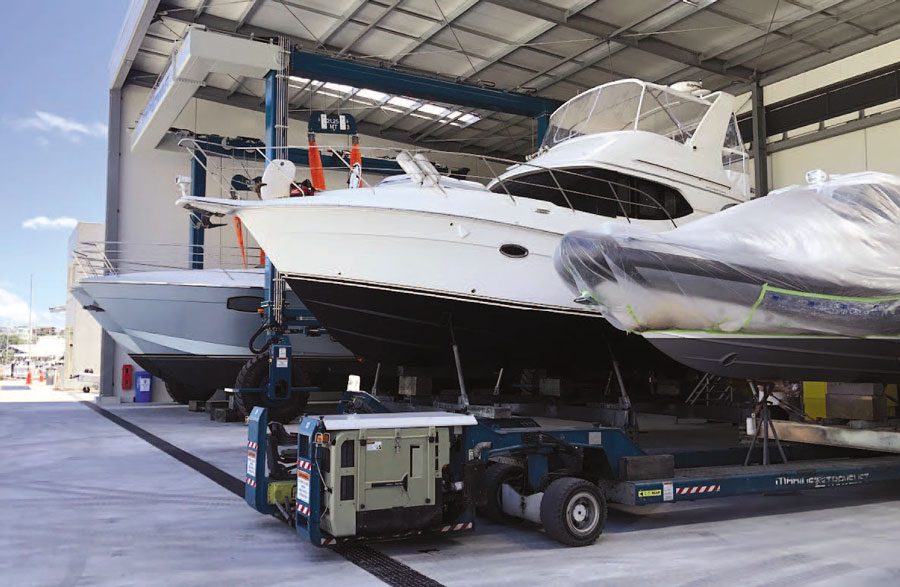
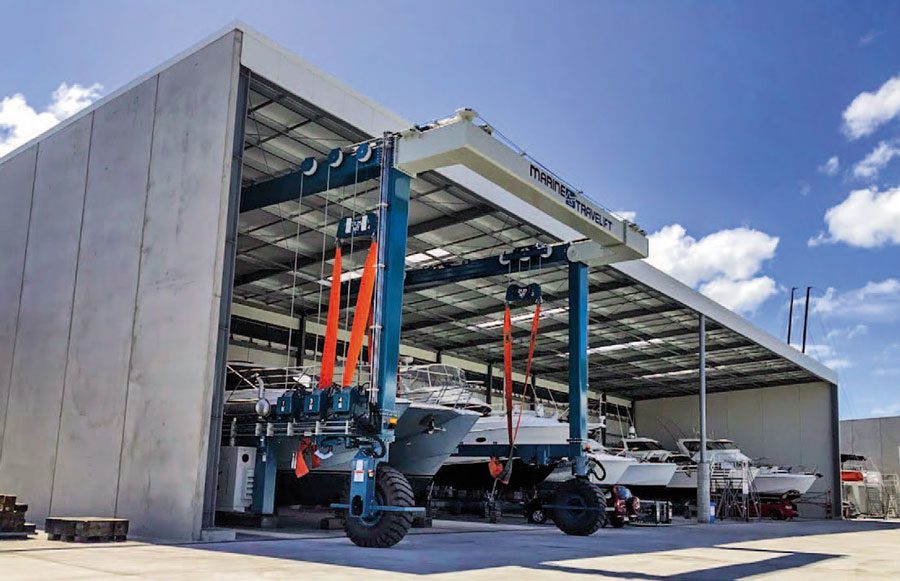
ENVIRONMENTAL UPGRADE
The expanded marina and reconfigured boat yard have also benefitted from environmental improvements.
“The waste and fouling collected at our previous wash-down bay was filtered, with the residual water released into the sea,” says Hollier. “The new bay is fullycontained and captures everything. It’s all bagged and sent to a trade-waste facility.
“Similarly, we demolished the old fuel dock and built a new one (operated by Gull). The fuel was stored in underground tanks – these were removed and new, above-ground tanks erected. Refuelling is also a lot quicker now because boats can now use both sides of the new dock – only one side was available on the old dock and it often created bottlenecks.”
Though a significant development, the new marina/boatyard’s development is only the first phase of a multi-stage plan. “A high priority in the next stage is building more covered sheds to accommodate bigger (longer) vessels, to optimise the capacity of the new travel lift.”
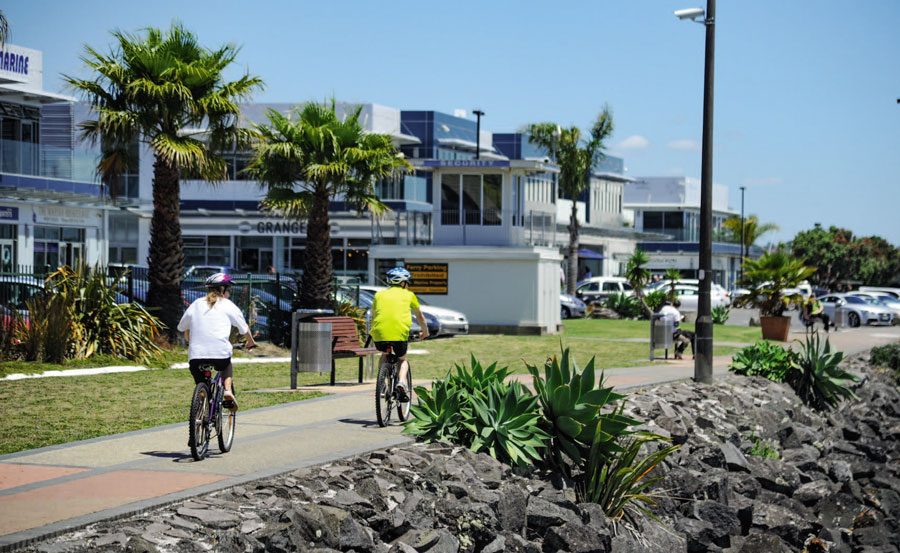
Hollier is confident the changes have created a ‘next-level’ marina – one that will be good for another 50 years. “It’s the full package – the scope, quality and efficiency of the facilities, the on-site shopping centre, the brokerage and other marine-related services – we like to think Half Moon Bay is now an even more appealing proposition for boaties.”
It’s hard to argue – the marina doesn’t have a single berth for sale.
That half-moon is looking quite a lot fuller.
Half Moon Bay Marina: www.hmbmarina.co.nz




